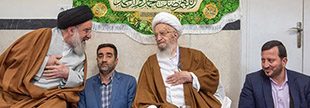Historical Foundations: From the Shah to the Revolution – Iran’s pursuit of missile technology can be traced back to the reign of Mohammad Reza Shah Pahlavi in the 1970s. At the time, Iran was a key strategic ally of the United States and a major purchaser of Western arms. Advanced weapons, including missile systems and associated infrastructure, were being imported in large volumes. The Shah’s regime even signed agreements with Western countries for the construction of a domestic missile production capability. However, this trajectory was abruptly halted following the 1979 Islamic Revolution, which led to the establishment of the Islamic Republic and a shift in both domestic policy and international alliances.
The revolution also ushered in a period of profound military vulnerability for Iran. Many Western countries imposed sanctions and embargoes, halting weapon deliveries and isolating the new regime. This precarious situation became even more pronounced during the Iran-Iraq War (1980–1988), where Iraq, under Saddam Hussein, had access to advanced weaponry, including ballistic missiles like the Scud-B, largely sourced from the Soviet Union. Iran’s lack of missile capabilities during the early years of the war exposed a critical strategic gap, prompting an urgent effort to procure and eventually develop its own missile systems.
Foreign Assistance and Indigenous Development
Despite international isolation, Iran managed to acquire missile technology and expertise from a range of sources. North Korea became a particularly important partner, transferring Scud-B missiles and technological know-how. China and, to a lesser extent, Russia, also contributed components and guidance systems, though often indirectly and sometimes in violation of international arms control regimes. Syria and Libya provided some assistance as well during the 1980s and 1990s.
Iran’s first significant domestic missile was the “Meshk” (also referred to as “Iran-130”), introduced in 1988 during the final stages of the Iran-Iraq War. With a range of about 130 to 160 kilometers, the Meshk marked the beginning of Iran’s indigenous missile production capability. This development was quickly followed by the creation of the Zelzal series, which were unguided artillery rockets with ranges between 100 and 400 kilometers, and later by more sophisticated systems like the Fateh-110, a solid-fueled, short-range ballistic missile with improved accuracy and mobility.

